Table of Contents
With social media dominating screen time, how can companies effectively leverage this opportunity to showcase their products through customer engagement? Shoppable content has emerged as a leading trend, seamlessly integrating shopping into social media feeds and simplifying the buyer’s journey.
Platforms like Instagram, TikTok, Pinterest, and Facebook have embraced this shift by offering features such as shoppable stories, live shopping events, and product catalogue integration. eCommerce plays a central role in maximizing engagement across these platforms.
Through shoppable articles, magazines, and ads, companies can ensure their products are visible throughout consumers’ daily digital interactions. These tools boost brand visibility and drive impulse purchases by providing a convenient shopping experience.
Combined with user generated content (UGC), which adds social proof and authenticity, the result is a more relatable and trustworthy shopping journey. This enhances the overall customer experience by making it quick, seamless, and engaging.
For eCommerce brands, this means working with eye-catching visuals and compelling captions that grab attention in social media and eCommerce spaces. By doing so, brands can effectively convert social interactions into sales and build lasting relationships with their audience.
Let’s discover these top brands’ shoppable content examples and how they successfully leverage this interactive experience.
Around 76% of American consumers have purchased a product they found through a social media post, with 11% buying immediately and 44% purchasing later. These figures highlight the significance of shoppable content in driving sales.
Let’s take a look at some relevant shoppable content examples, how leading brands utilize it and the successful interactive experiences they create:
Videos are an engaging way to offer shoppable content, combining audio and visuals to reach a broader audience and build trust. Several platforms and brands effectively use shoppable video content, including YouTube, TikTok, Pinterest, and eCommerce websites.
Ikea has taken a creative approach by adding a unique section on its website where users can upload videos with embedded product links.
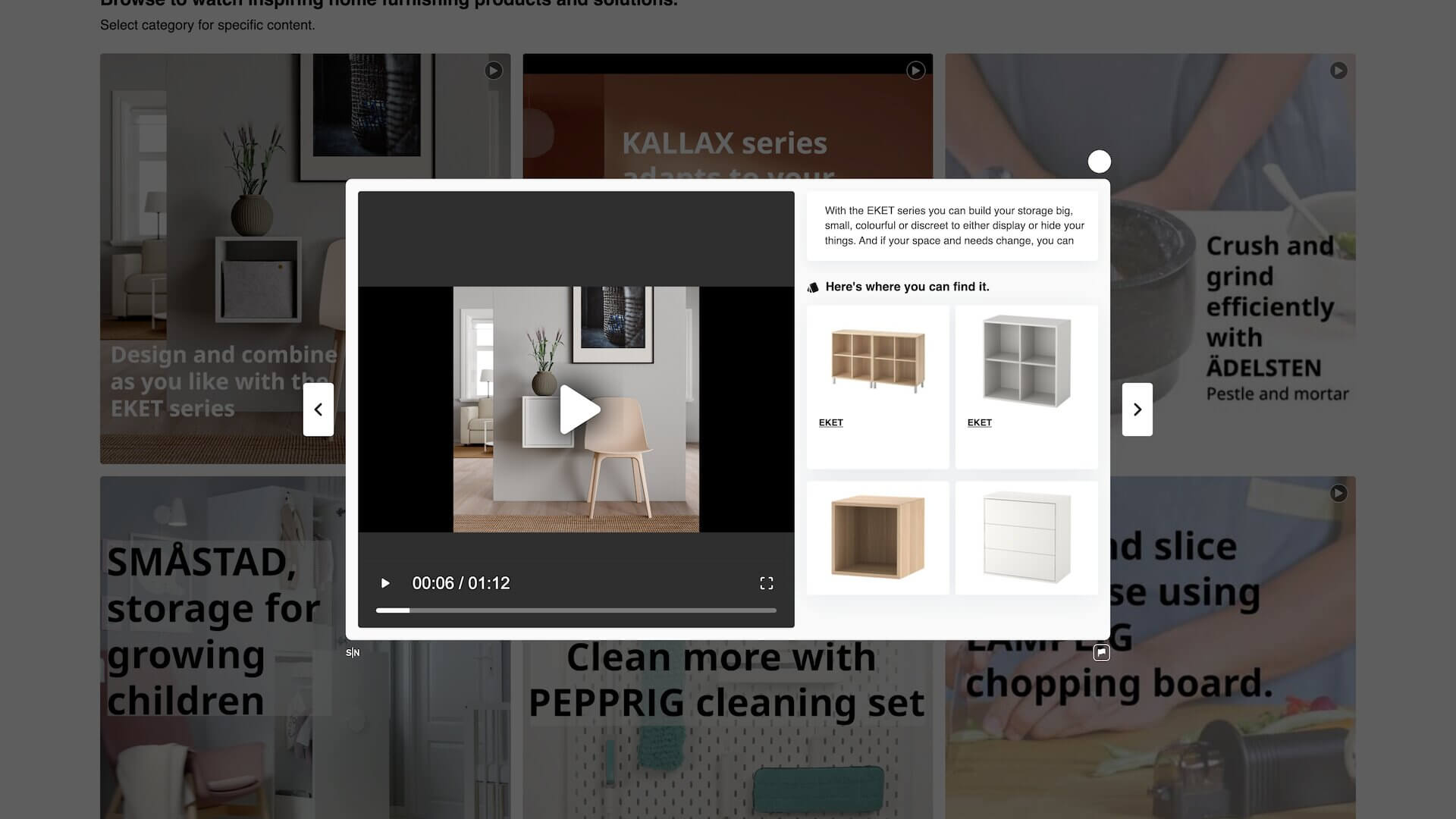
They’ve also introduced the recognize tool during their Instagram Lives using Flowbox’s tools. This innovative feature distinguishes them from competitors and adds a fun, interactive element. It allows Ikea to engage personally with its audience while offering a seamless way to explore and purchase products.
You’ve probably heard about adding Instagram content to your website, but have you considered incorporating your website into your Instagram posts? More brands are recognizing the advantages of featuring shoppable content on Instagram.
When users encounter authentic, relatable content that seamlessly links to the checkout page, it enhances their shopping experience. Instagram shoppable content works well with both user generated and professional content, making it adaptable to your company’s specific needs.
Havaianas demonstrates how they leverage professional content by adding shoppable tags to their Instagram feed. New products are showcased with charming photos and a convenient shoppable tag, allowing users to purchase directly from the platform without navigating to a separate website. Since we often follow brands we love on social media, Instagram becomes an ideal space for making purchases.
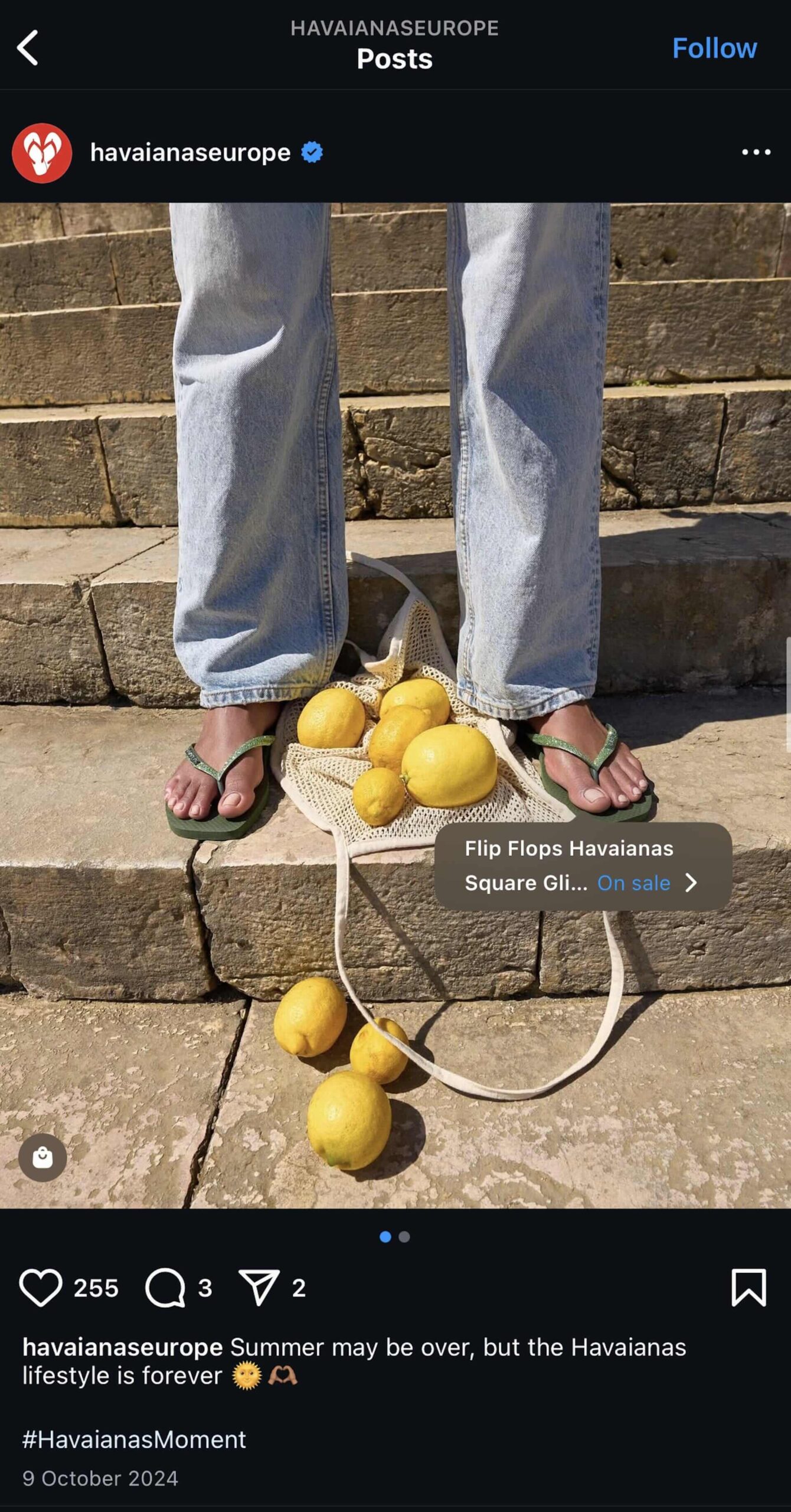
After browsing through endless summer inspiration, spotting the perfect flip-flops can create an instant urge to buy. By eliminating the hassle of searching for the product on a website, Havaianas offers a faster, more streamlined shopping experience, making it easier for customers to grab those trendy flip-flops.
If you’re looking to simplify the shopping journey or enhance your website with useful tools, adding shoppable tags to your products or content could be the perfect solution. This can help create the interactive and seamless shopping experience your audience deserves.
Alpro excels at using user generated and shoppable content, offering unique product pages that feature user-created recipes showcasing their dairy-free products. This personalized approach not only highlights how their products can be used but also encourages purchases.
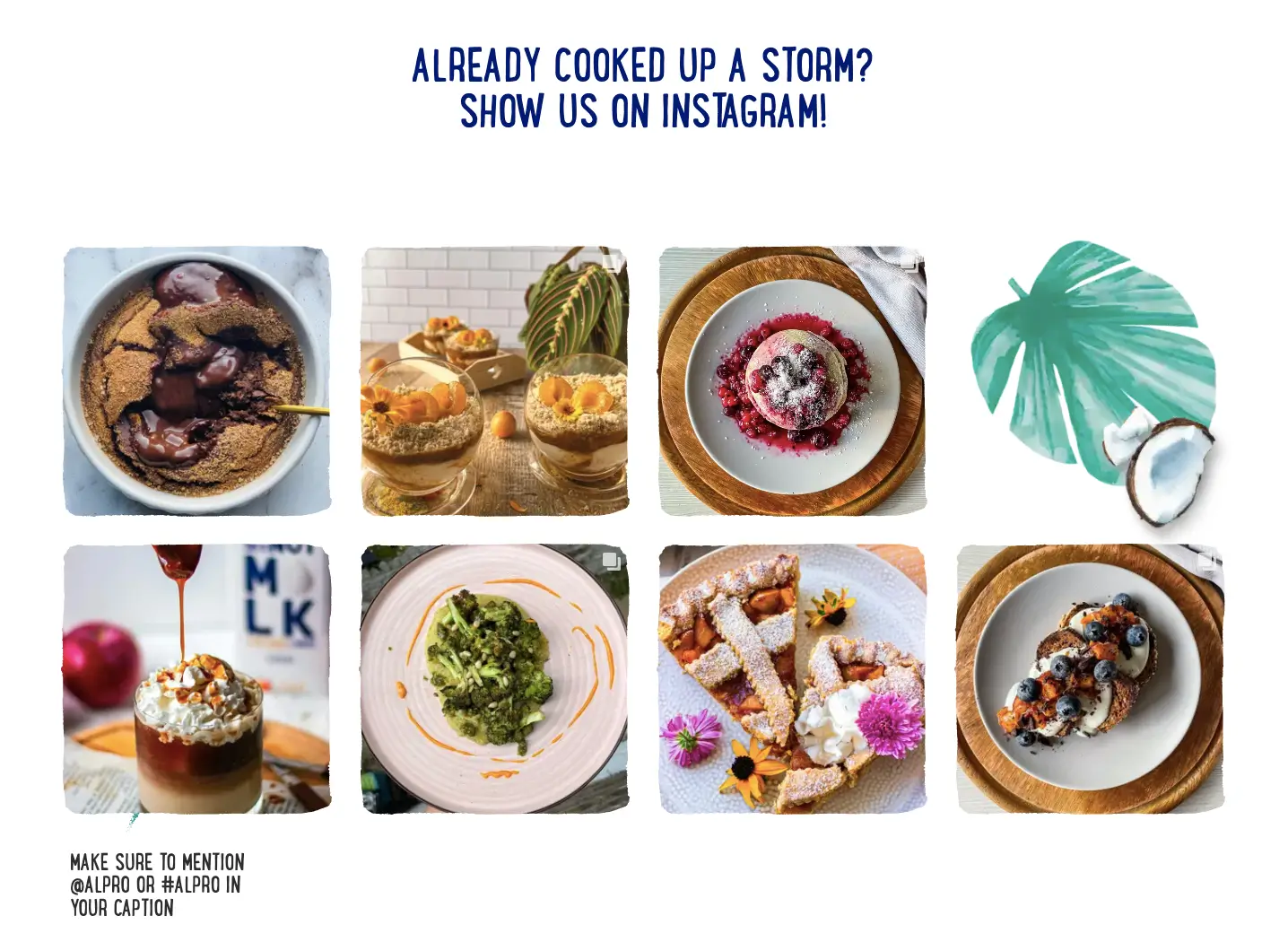
For example, seeing a chocolate fudge cake made with Alpro plant-based milk would encourage the customer to buy the product and re-create the recipe. With the shoppable tag, they can do so with ease.
Shoppable flows can also be creatively integrated into unexpected areas, like 404 error pages. Encountering a 404 page can be frustrating and might even drive customers away. Bijou Brigitte found a clever solution to prevent this by adding shoppable flows to their 404 error pages.
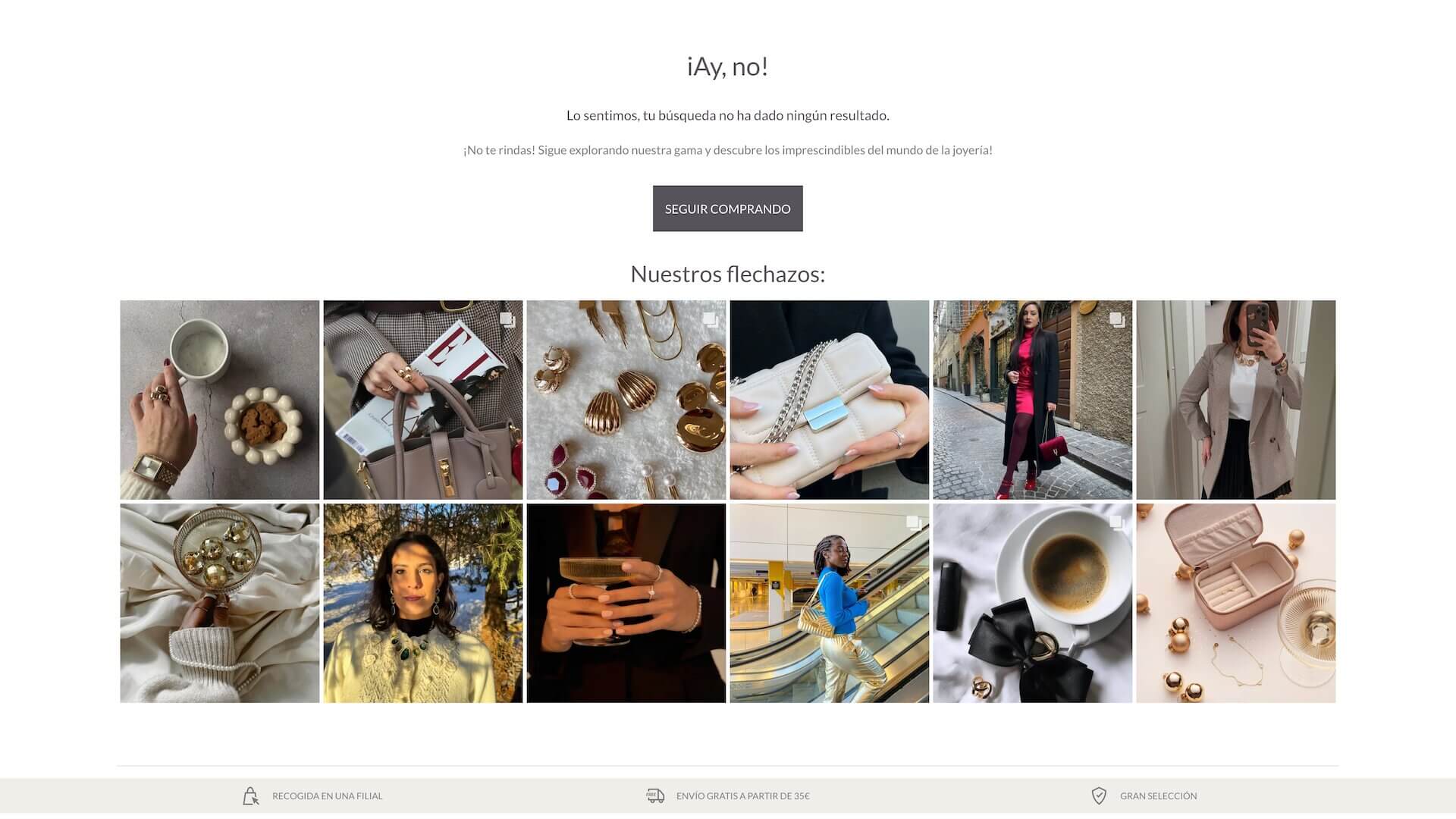
Instead of leaving empty-handed, customers are presented with other products they might like, with the option to purchase directly from that page. This smart approach turns a potential dead end into an opportunity for a seamless shopping experience, giving customers a second chance to complete a purchase.
Another way to integrate your flows creatively is to introduce them into your blog posts and articles. The likelihood that the users who are reading your blogs are also interested in your products is high. This is because the interest in your topics will be related to the need for the product.
If the involvement with your company is not only informative but also shoppable, it will increase the chance of purchase. Adding your shoppable products to your article will also enhance the visibility of the article as it will become another platform for purchase. It will allow you to produce more product-focused articles and increase product linking.
With a blog, MILIBOO not only informed their customers on how to integrate chrome furniture into their interior but also provided them with a shoppable flow that showed them inspirations of how their existing customers designed their space with the products.
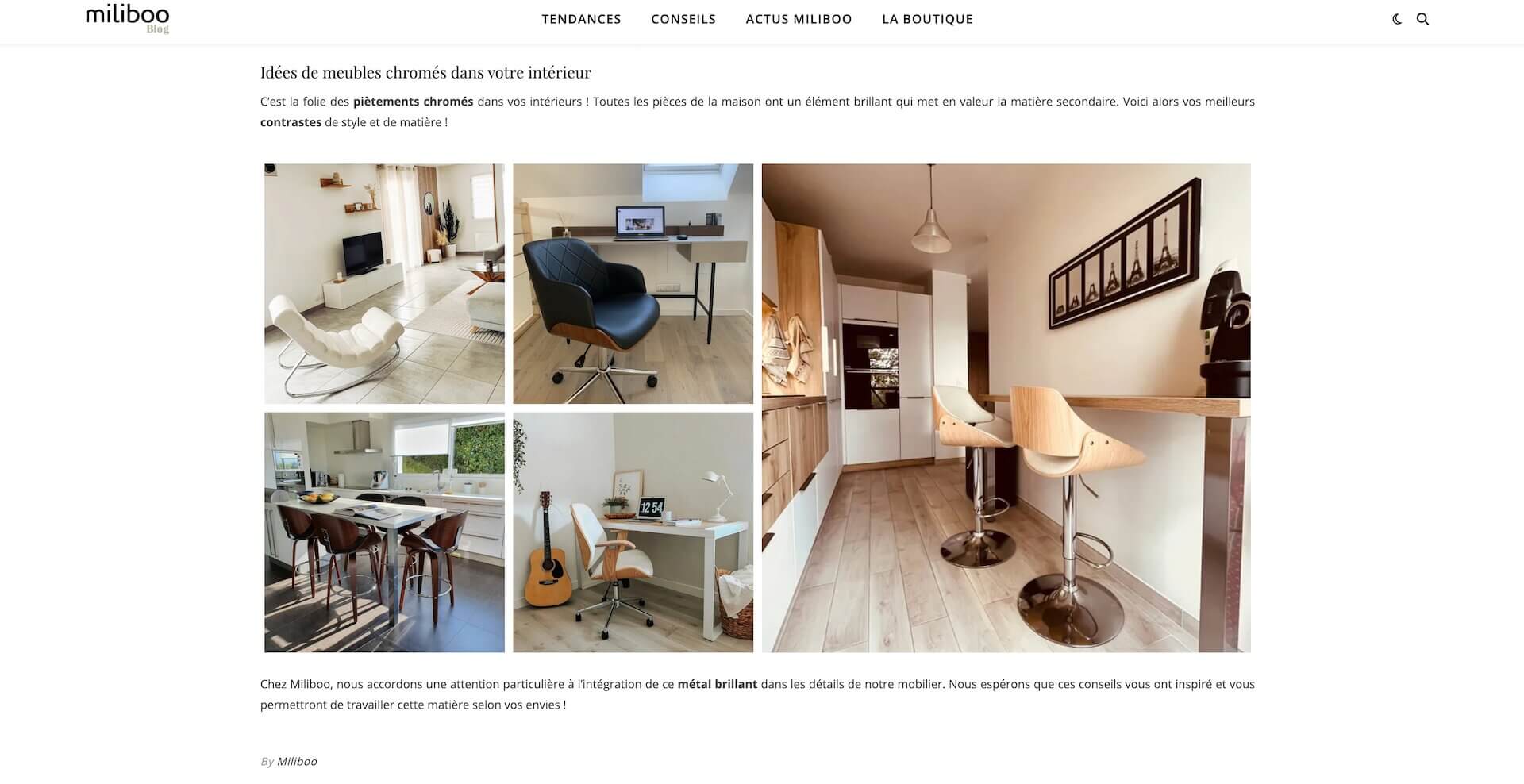
In the case that someone would be reading this article, they would most likely be looking for or thinking about integrating chrome furniture, allowing Miliboo a great chance at providing, in the same place, their products and advice as a solution to the customers’ needs.
How can we engage customers across the most platforms possible? One simple way to connect with clients who are part of your company’s community or subscribed to your email list is by adding shoppable content or flows to your emails.
This allows clients to interact with your products directly through emails, without needing to navigate to your website. It’s an effective way to showcase your products to both new and loyal customers. With just a click on the featured product, clients are taken straight to the product page, ready to make a purchase.
Expanding your brand’s reach through personalized emails enhances engagement by making clients feel included and valued. It also provides a convenient reference point for updates on new products, elevating the shopping experience and setting your brand apart from the competition.
TWIST & TANGO has successfully incorporated shoppable product content and flows into their emails, ensuring that clients can easily browse and purchase their latest fashion items.
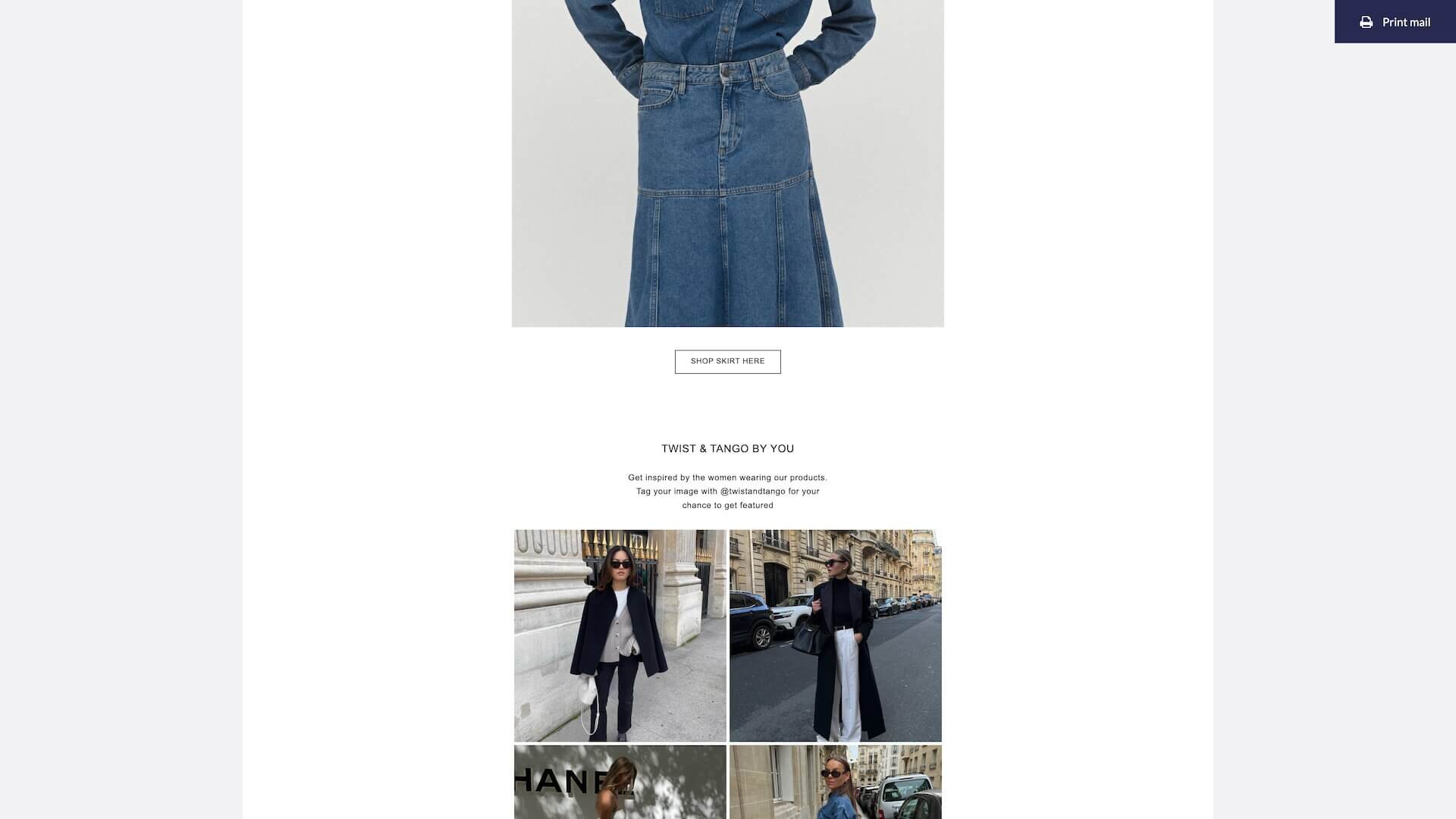
By blending the convenience of email with relatable content created by other customers, they’ve crafted an exceptional shopping journey. This approach not only makes navigation simple but also gives clients a compelling reason to stay subscribed, keeping TWIST & TANGO at the forefront of their customers’ minds
Ads are a powerful tool for capturing attention on social media, seamlessly integrating into platforms and enhancing brand visibility. When executed well, ads can drive the recognition your brand needs online. However, there are challenges.
Social media users often view ads as untrustworthy or irrelevant due to the sheer volume they encounter. So, how can your brand stand out in this sea of ads while ensuring the content remains reliable? By incorporating user generated content, you offer users the reassurance that others are genuinely using and liking your products.
MELLER has successfully made UGC a core part of their brand identity. They enhanced their ads with two key strategies: integrating UGC and making their products directly shoppable from the ads. Consumers often perceive ads as unreliable due to the lack of authenticity in the content.
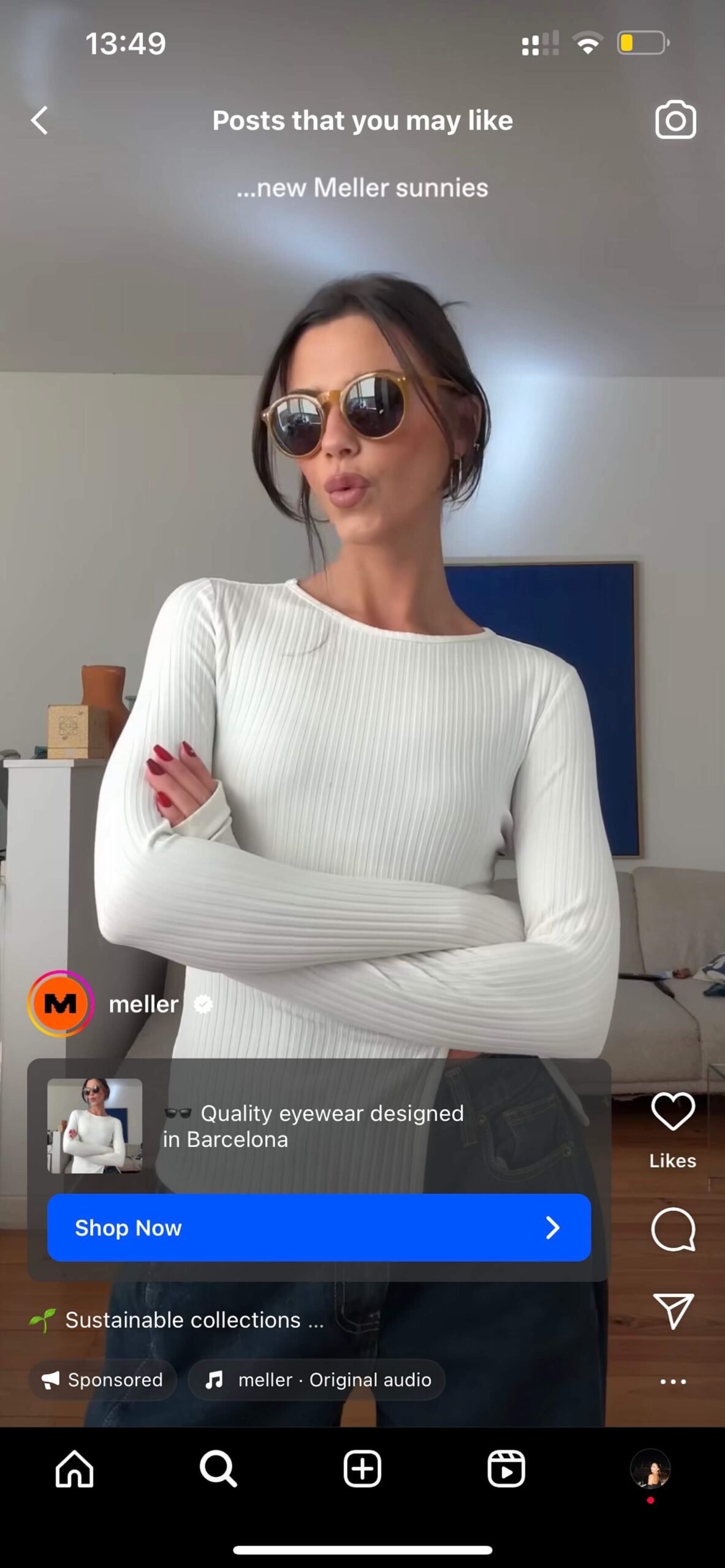
Additionally, they are less inclined to invest time, money, or attention in a brand they don’t trust. MELLER’s approach addresses these concerns effectively. First, UGC is seen as more trustworthy because it reflects real customer opinions, building credibility for the brand’s content. Second, by making the products shoppable within the same platform as the ad, MELLER streamlines the shopping experience, making it more time-efficient and comfortable for consumers to make a purchase.
UGC shoppable content integration involves adding purchasable links directly within user generated content, allowing consumers to buy products featured in posts, reviews, or photos shared by other customers. This strategy enables brands to showcase authentic experiences with their products while offering a simpler shopping journey.
For example, a brand could feature a customer’s Instagram photo in an ad, with clickable links that direct users to the product pages. This approach blends social proof with seamless shopping, making it simpler for consumers to complete a purchase. Shoppable UGC enables potential buyers to see real people using a product, boosting trust and influencing purchase decisions.
Shoppable Content Platforms like Flowbox offer tools to turn UGC into shoppable posts. With Flowbox’s MultiProduct Linking, brands can connect multiple products to a single post, showing how items can be mixed and matched. Flowbox Recognize uses image recognition technology to identify products in customer photos, instantly linking them to catalogue items, a crucial feature for brands with large or dynamic inventories.
The possibility to buy directly from a social media feed encourages impulse purchases, making it effortless for consumers to go from browsing to buying in just a few clicks. This seamless process combines users’ time with shopping, creating a convenient and engaging experience.
Incorporating a shoppable Instagram feed on your website is just the beginning. Displaying UGC carousels on product pages allows customers to see others wearing or using the products they’re considering. Additionally, embedding content in email marketing campaigns shows customers products they nearly purchased, giving them another opportunity to complete the transaction or introducing them to new products.
Overall, integrating shoppable content into your UGC strategy can be the key to converting indecisive customers. Platforms like Flowbox make it simple to link products across various media platforms, allowing you to customize and optimize your approach.
By merging the authenticity of UGC with the convenience of direct purchasing, brands can enhance customer experiences, boost conversions, and increase brand awareness.
Find out more on how to integrate UGC and shoppable content into your website to create a greater shopping experience for your customers. Book a demo with Flowbox UGC Platform.